Chorizo de Bilbao is a spicy, tender and juicy Spanish sausage generally made from pork and beef with lots of paprika. This sausage is popular in Spain and in the Philippines and many Filipino dishes with Spanish influence contains Chorizo de Bilbao. Making this sausage is not as hard as you think.
The only thing is that is requires at least 4 days of curing time to make it. Maybe that is the reason why it is more expensive than a regular sausage or longganisa. I also wonder why it is called Chorizo de Bilbao where “Bilbao” is a municipality and city in Spain. The ingredients are basically the same as the pork longganisa, only the amount paprika in the ingredients and the way it is prepared makes the difference.
A Family Favorite from My Childhood
Growing up, Chorizo de Bilbao was always a special treat in our family. I still remember those Sunday afternoons when my grandmother would bring out this fragrant, reddish sausage and fry it up with some garlic rice. Back then, I didn’t understand why it tasted so different from the regular longganisa I was used to—rich, smoky, and with a hint of spice that lingered long after the meal was over. Now that I’ve learned how to make it myself, I see why this Spanish sausage holds such a revered place in both Spanish and Filipino kitchens.
Chorizo de Bilbao is not your everyday sausage. It’s tender, packed with paprika, and brimming with bold flavors. And while making it may seem intimidating, especially for beginners, I promise you it’s more about patience than skill. All you need is some basic ingredients, a little bit of time, and a love for tradition.
A Piece of Spain in Every Bite
Chorizo de Bilbao may carry the name of a city in northern Spain, but it has firmly planted its roots in Filipino cuisine, often starring in stews, pasta, and even rice dishes like paella. I remember my brother telling me after one of his trips to Spain that this sausage isn’t just about meat—it’s a bite of history. Spaniards have long been masters of curing and preserving meats, and this style of chorizo draws from that rich tradition.
It’s worth noting that there are many varieties of chorizo across Spain, but the one we are focusing on today is typically made with pork and beef. The intense paprika, which gives it that fiery red color, sets it apart from other sausages and is the cornerstone of its flavor. My brother-in-law, a chef by trade, once told me that paprika is to Spanish cooking what soy sauce is to Filipino food—it’s foundational, offering both color and depth of flavor.
Ingredients Make All the Difference
The first time I tried making this chorizo at home, I was struck by how simple the ingredients were. It’s not so different from preparing Filipino longganisa—pork, beef, garlic, and spices, but the paprika really steals the show here. The recipe calls for both ground pork and beef, and the fat from the pork adds a much-needed juiciness. It’s this combination of meats and fat that makes the chorizo so tender.
When preparing the ingredients, I like to follow my grandmother’s advice: brown the garlic in oil first, then add it to the meat mixture. The oil captures all the flavor from the garlic, which then infuses into the sausage as it cures. My sister, who loves to tweak recipes, once tried adding a bit of smoked paprika alongside the sweet paprika, giving the chorizo an extra layer of smokiness. It’s not traditional, but it definitely works if you’re after a slightly different twist.
The Patience Game: Curing and Drying
One of the most important steps in making Chorizo de Bilbao is the curing process. After you’ve mixed the meats, spices, and oil, you’ll need to fill the longganisa casings and let them rest in the refrigerator for three days. This curing period allows the flavors to meld together. I’ll admit, waiting for the chorizo to be ready was the hardest part for me. But like my uncle used to say, “Good things take time.”
After the initial curing, you’ll need to boil the sausages briefly to firm them up. Pricking them with a fork helps eliminate any air bubbles, and believe me, this step is crucial—nobody wants a sausage that bursts while cooking! After boiling, the sausages are either left out to dry in the sun or dried in the oven at a low heat.
My aunt, who lives in the province, prefers sun-drying her chorizo, as the natural heat adds a subtle flavor that reminds her of her childhood. If you don’t have the luxury of an outdoor space with strong sunlight, the oven works just as well.
Cooking and Storing
Once your chorizo has dried, it’s time to cook it in the flavorful broth left over from the boiling process. Adding some oil or shortening will give the sausages that beautifully rich texture. You’ll need to simmer the chorizo until the broth evaporates, and only the oil remains, coating the sausages with a glossy sheen. I like to turn them a few times while cooking to make sure they brown evenly. The smell alone is enough to make anyone hungry!
When the chorizo is done, I let them cool before storing them in a covered container. Pouring the remaining oil over the sausages before refrigerating keeps them moist and ready for future use. In my family, we always make a large batch and store it for those days when we need a quick but flavorful addition to our meals.
A Bite of Tradition
Chorizo de Bilbao is more than just a sausage; it’s a small piece of tradition passed down through generations. Whether you’re using it to enhance a dish like pochero or simply frying it up with rice, this sausage carries with it a story—of Spanish influence in Filipino kitchens, of family recipes tweaked and perfected over time, and of meals shared with loved ones.
If you’re new to making sausages at home, don’t be afraid to try this recipe. It may take a few days, but the effort is well worth it. Every time I make Chorizo de Bilbao, I’m reminded of my grandmother’s kitchen and the smells that filled our home. And just like her, I hope to pass on this recipe to the next generation.
How to Make Chorizo De Bilbao
Ingredients
- 1/2 kilo ground beef fatless
- 1/2 kilo pork fatless
- 1/4 kilo pork fat cubed
- 1/4 tsp. salitre
- 2 Tbsp. fine salt
- 2 Tbsp. white sugar
- 3 tsp. ground pepper
- 1 head garlic minced
- 1/4 cup pimenton or Spanish paprika
- 3/4 cup cooking oil
Instructions
How to Make Chorizo De Bilbao:
- Brown garlic in oil. Add garlic and oil to the ground beef meat, pork meat and pork fat.
- Add the rest of the ingredients (except cooking oil) and mix well. Fill in longganisa casing.
- The chorizo should be at least 4 inches long. Keep in the refrigerator for 3 days.
- On the 4th day, place in pan, cover with water and boil for 10 minutes.
- Prick with fork to eliminate air bubbles under the skin. Drain.
- Set aside broth. Dry in the sun for a day or dry in the oven with a low heat (200 °F) for 2 hours.
- Place again in pan. Pour back broth (where chorizos were boiled). Add 3/4 cup cooking oil or shortening.
- Simmer until the liquid dries and only the oil is left. Turn several times while cooking.
- Cool and arrange in a container with cover. Pour in oil. Keep in the refrigerator.
Notes
Cooking Tips:
Use Fresh Garlic for Maximum Flavor
When browning garlic in oil, always opt for fresh cloves instead of pre-minced garlic for a richer, more robust flavor. Fresh garlic releases oils that infuse the sausage with an aromatic depth, enhancing the taste of the paprika and meat. This step might seem small, but it makes a big difference in achieving that authentic chorizo flavor.Allow Enough Time for Curing
The curing process is essential for developing the distinct taste and texture of Chorizo de Bilbao, so don’t rush it. Allowing the sausages to rest in the refrigerator for three days helps the flavors from the paprika and spices penetrate the meat thoroughly. Skipping or shortening this step will leave you with less flavorful, underdeveloped sausages.Prick the Sausages to Prevent Bursting
After boiling the sausages, always prick them with a fork to remove trapped air bubbles. This step ensures the casing doesn’t burst during the drying or frying stages, which could result in uneven cooking. Pricking also helps the sausages maintain their shape and texture while cooking in oil or shortening.
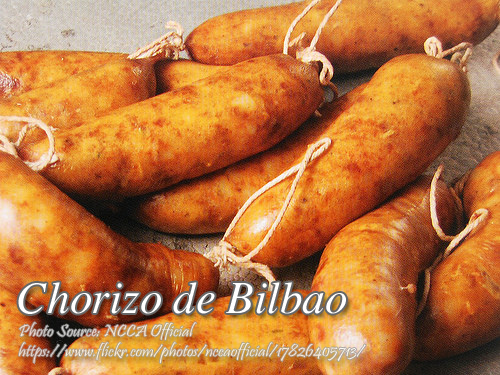

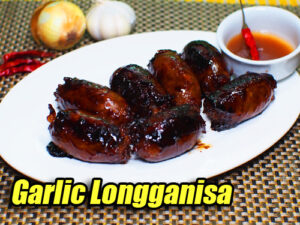
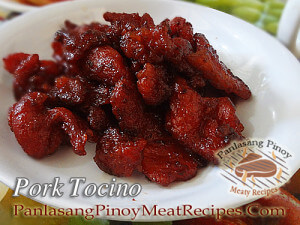
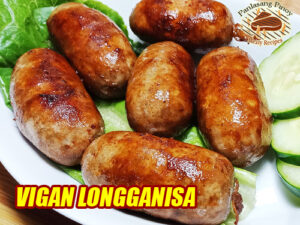
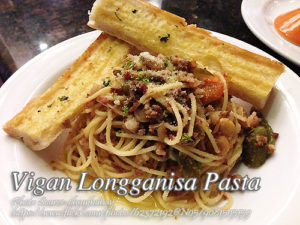
Great job!! But I have a question? How much water do you use to boil the sausage?
Hi Oscar, the amount of water is not important. Use just enough to cover the sausages. I think 3 to 4 cups is enough.